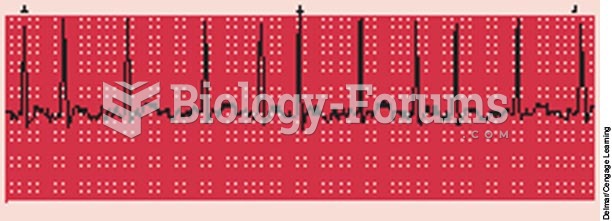|
|
|
Complications of influenza include: bacterial pneumonia, ear and sinus infections, dehydration, and worsening of chronic conditions such as asthma, congestive heart failure, or diabetes.
Alcohol acts as a diuretic. Eight ounces of water is needed to metabolize just 1 ounce of alcohol.
People about to have surgery must tell their health care providers about all supplements they take.
Inotropic therapy does not have a role in the treatment of most heart failure patients. These drugs can make patients feel and function better but usually do not lengthen the predicted length of their lives.
According to research, pregnant women tend to eat more if carrying a baby boy. Male fetuses may secrete a chemical that stimulates their mothers to step up her energy intake.
 A pump showing regular with a pump octane of 87, plus rated at 89, and premium rated at 93. These ...
A pump showing regular with a pump octane of 87, plus rated at 89, and premium rated at 93. These ...
 A spark tester looks like a regular spark plug with an alligator clip attached to the shell. This ...
A spark tester looks like a regular spark plug with an alligator clip attached to the shell. This ...





